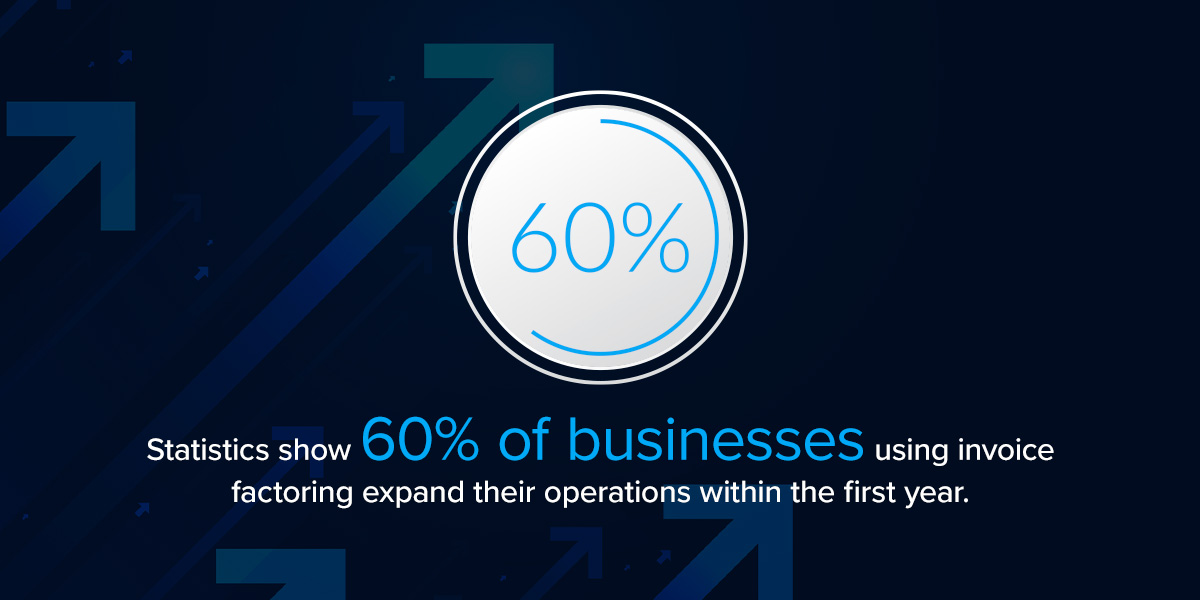While scaling a business is a strategic goal for many entrepreneurs, a lack of working capital can limit your ability to expand your operations, revenue and reach. Scaling up can be costly, even with sound growth strategies and a well-crafted business plan.
Expansion financing is one of the best solutions for business owners who need to manage their baseline expenses without affecting their current operational and financial status. The appropriate financing source depends on many variables, including your credit history. Fortunately, options like invoice factoring do not prioritize your credit score when you need extra cash flow to grow your business, allowing you to implement your expansion plans quickly.
Benefits of Scaling a Business
Scaling enables companies to expand their reach, strengthen their competitive position and generate more revenue without proportionally increasing costs. Here are some reasons to consider this strategy.
- Increased valuation: A successfully scaled business is often more attractive to potential investors or partners, as it demonstrates your ability to grow and generate sustainable returns.
- Long-term sustainability: Scaling up can create a more stable and resilient company that can withstand market fluctuations, economic downturns and competitive pressures.
- Market Share: Securing a larger market share potentially creates barriers to entry for new competitors.
If you intend to scale your business, here is some advice for hitting your targets.
Plan Realistically
Planning is crucial for every business move, including scaling. Integrate your plan with your overall expansion strategy to measure business growth and keep your team on track. Use SMART goals to define clear-cut, realistic criteria around the objectives you want to accomplish.
You must also evaluate your finances when preparing to scale, ensuring you have enough resources to bankroll your growth initiatives. If you lack sufficient funding, consider securing a working capital loan to manage your cash flow effectively as you scale.
Growth can take different directions, depending on your business’ current status and potential. For example, you could enter new markets, diversify your product or service offerings or invest in essential infrastructure and tech.
Grow your Business Into New Markets
Expanding your market reach allows your business to access a broader customer base, reduce reliance on a single market and increase revenues. These tactics create opportunities for business growth and innovation, which are critical to your company’s long-term sustainability.
The market expansion strategy involves the following components.
- Segmentation: Identify overlooked segments, then tailor products to meet their specific needs.
- Geographic expansion: Establish a foothold in new regions or countries by entering partnerships, setting up distribution channels or opening new branches.
- Acquisitions: Your business can acquire other companies in the same industry to access their customer base, technologies and market share.
- Channel expansion: Add distribution channels by using e-commerce platforms or partnering with new retailers.

Whatever methods you choose, you’ll need resources to implement them as planned. When you spot opportunities that need urgent funding and cannot wait for business loans for expansion, the best alternative is to use invoice factoring and get the money within 24 hours. Statistics show 60% of businesses using invoice factoring expand their operations within the first year.
Diversify Your Products
Expanding your product and service offerings can help you achieve sustainable success. Like market expansion, this strategy requires thorough research to help your business appeal to new audiences and attract more customers.
You can diversify your offerings in these three ways.
- Concentric: You add related products or services. For instance, if you manufacture and sell bicycles, you could expand into selling accessories like locks, helmets and repair kits.
- Horizontal: You introduce new items in a different product category that still serve a similar customer base. An example is a company that makes laptops pivoting to sell smartphones, too.
- Conglomerate: This tactic involves adding products or services with no commercial or technological similarities. The best-known example of this is Amazon, a retailer that started selling books and has since grown into a massive online marketplace for millions of products.
Aspects to Address When Expanding Your Product Line
Consider these points when planning to diversify your offerings.
- Identify gaps: One goal of your market research should be pinpointing which current products or services do not fully meet your customers’ needs.
- Asses customer demand: Invite consumer feedback and gather their suggestions on new offerings they would like to see from you.
- Pilot and test: Test products in a controlled environment to analyze their performance and adjust as needed before launching.
- Innovate continuously: Always keep an eye on market trends, customer desires and emerging technologies, then introduce new products accordingly.
As a sustainable strategy for scaling a business, product or service diversification lets you branch out. If adversity strikes and you experience a seasonal or industry-wide downturn, your business can rely on other sources to soften the impact.
Research and development or investing in new products for resale can be capital-intensive, and tapping into your current cash flows may affect your business operations. You can avoid these situations through flexible, short-term loans and lines of credit.
Invest in New Infrastructure and Technology for Business Growth
You will eventually need to put money back into your business, but this expansion investment strategy can be costly. Buying a parcel of land, vehicles or a new building typically means taking seeking external funding from sources such as venture capitalists, government grants or bank loans.
As your business scales, you can use technology to streamline operations and improve productivity. Investing in the latest technology to stay ahead of your competition may also require substantial capital. However, these tools promote sustainable growth because their performance can adapt alongside your business.
Automation can free your team’s time to focus on more mission-critical responsibilities. For example, imagine how switching to an automated invoicing system that bills your customers quickly and accurately might allow your accounting department to strategize new revenue streams instead of spending hours on repetitive, tedious and error-prone tasks.
Get Your Expansion Financing Solutions From Porter Capital
Lack of capital should not halt your plans to scale, not even when going the traditional route proves to be complex and full of red tape. Don’t miss out on time-sensitive opportunities while waiting for a bank to process expansion business loans. We can give you the financing you need within 24 hours to strike while the iron is hot.
Porter Capital can secure you up to $25 million in funding to grow your business with tailored solutions and rapid turnaround times. Apply online to request your free quote today.




